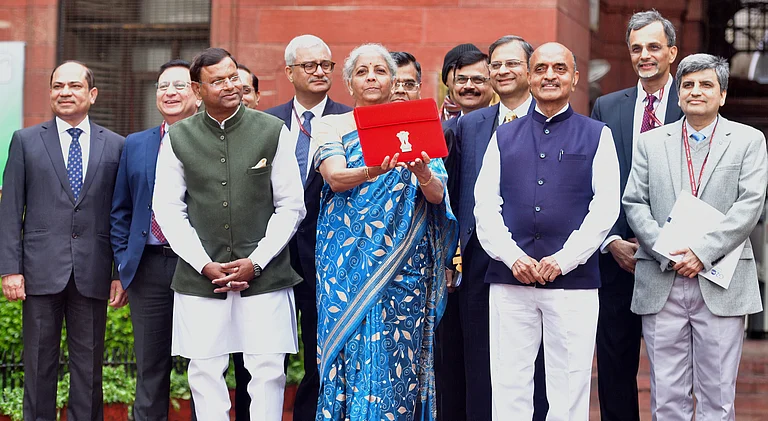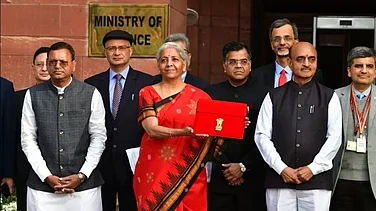As India anticipates the Annual Budget for FY 2024-25, the first under NDA 3.0 expectations are extremely high, fuelled by a significant increase in indirect tax revenue and RBI transfers. Three important state elections, including Maharashtra and a real coalition government, will also test the budgets’ ability to balance short-term populist/partner demands vs. continued focus on long-term capital expenditure and reform-oriented spending that drives sustainable growth.
India’s overall macroeconomic performance has been robust, with growth rates of 7.8 per cent, 7.6 per cent and 8.4 per cent in the first three quarters, propelling the nation to the fifth-largest economy and aiming for the top three by 2027. The Modi government’s increased capital expenditure from 2 per cent to 3.8 per cent of GDP has led to the construction of nearly 54,000 km of highways, doubling the achievements of the previous decade.
To reach the vision of a $30 trillion economy by 2047, will require a manageable fiscal deficit and proactive policies, especially as a country transitions into a digital and creative economy built around increased capital flows and expenditure (especially private investments) and jobs. Budget 24-25 has to be seen in this background, and the direction it will set to enable the transition India needs to make, especially some critical areas I mention below.
Transition to, and Growth in Manufacturing to create jobs
Historically, industrialisation has reduced agriculture’s GDP share, as seen in countries like China, the USA, Japan, and Brazil. India mirrors this trend - in the 1970s, agriculture made up 40 per cent of Gross Value Added (GVA), but now it accounts for less than 20 per cent of economic output. Although India’s shift from agriculture to manufacturing began in the 1970s and manufacturing’s GDP contribution has plateaued at 13 per cent, the sector remains promising.
Recent S&P Global data shows manufacturing activity hit a 16-year high of 59.1 in March, driven by new orders, increased inventories, and job creation. Additionally, manufacturing exports reached a record $447.46 billion in FY23, marking a 6.03 per cent increase from FY22’s $422 billion. The recent report on reduced jobs in the informal sector further underscores the need for focus on manufacturing to create more jobs. To further harness this growth, the budget should focus on building competitive advantages.
Expanding the Production-Linked Incentive (PLI) schemes to textiles, medical devices, Garments, and Handicrafts and enhancing the Skill India Mission with an emphasis on technology and apprenticeship programs for youth and women are essential steps. Furthermore, supporting MSMEs by easing access to finance and loan programs, along with investing in industrial corridors and smart cities through higher allocation to initiatives like SAMARTH, will reinforce manufacturing growth.
Rural India Needs Urban Infrastructure
As we await the much-needed National Census, World Bank and UN reports indicate that by 2036, India’s urban population is expected to reach 600 million, accounting for 40 per cent of the total population and nearly 70 per cent of GDP. However, rapid urbanisation, characterised by unplanned expansion and increased rural migration, underscores the need for a strategic urban transformation to achieve the goal of becoming a developed nation by 2047.
While past budgets have introduced initiatives like Smart Cities and AMRUT, the upcoming budget must focus on creating world-class basic infrastructure that can also withstand the climate crisis we all feel. The budget should prioritise materialising the UIDF fund to assist states in developing counter-magnetic cities to alleviate the burden on major urban centres.
Towards this end, new planned cities will be important. Additionally, a national urban design policy (like the one initiated by Maharashtra and Kerala) will be important to bring some direction and consistency in cities. Effective collaboration with state-level planning and design institutions is essential for ensuring integrated and sustainable development. The urban and housing development sector should focus on rental housing with long-term home ownership options so that existing urban centres can continue to support growth.
Clean Energy to Energy Security
Despite contributing only about 4 per cent to global emissions from 1850-2019 and maintaining low per capita emissions, India remains highly vulnerable to climate change impacts. The Climate Change Performance Index (CCPI) reports that India is on track to meet its Nationally Determined Contributions (NDC), yet the growing reliance on coal, oil, and gas is a concern.
The recent surge in extreme climate events amounting to 2,923 deaths, 80,000 homes destroyed, and more than 92,000 animals significant destruction in 2023 underscores the urgency of action. As we adapt to the new abnormal, the budget must translate the nation’s resolve for a Net Zero commitment by 2070 into action. An increased focus on renewables, including their increased adoption, is necessary.
Moreover, PM Modi’s LiFE program holds significant promise and requires dedicated institutional and monetary support. Additionally, promoting EV adoption requires a well-defined retrofitting model to overcome existing challenges supported by effective policy measures. A focus on green jobs and skill development is also essential for successful implementation.
Certify Your Skills: The New Age of Digi Education
As India charts its path to becoming a global economic leader, addressing both digitisation in education and youth skills development is essential for sustainable growth. The rise of technology in education is evident, with a 14.99 per cent adoption of smart classrooms across schools.
However, there is a significant gap, especially in public schools, where only 14.4 per cent have functional smart classrooms compared to 18 per cent in private schools. To broaden the reach of smart classrooms, the government must increase infrastructure investment, fortify educator training, and develop localised policies for effective implementation.
Simultaneously, India’s EdTech sector has grown significantly, with $1.32 billion invested from 2014 to 2020, driven by soaring student demand and expanding internet penetration. Yet, despite this progress, over half of India's working-age population remains unemployable, and only 49 per cent of youth are job-ready. The solution lies in enhancing industry-government collaboration to integrate skill-based training into college curricula, promote vocational training, and establish robust apprenticeship programs.
To harness this potential, the government must increase capital expenditure on education and skill development, focusing on creating new educational opportunities and ensuring that investments translate into real job growth. A strategic allocation of resources towards these areas will not only sustain current momentum but also pave the way for future progress. We need to look at education and skills as the same side of the coin!
Market-Linkage support to farmers
The Indian agriculture sector, vital to the livelihood of over 40 per cent of the population, is a major player in both domestic and global economies, contributing 12 per cent of Indian exports and 11.9 per cent of global agricultural gross value added at USD 3,320.4 billion.
To fully unlock this potential, the budget must make market-linkage support a central focus. Despite being the world's largest milk producer and a leading source of fruits, vegetables, seafood, meat, and poultry, India faces severe food losses due to inadequate cold chain infrastructure, with the FAO estimating annual losses of 1.3 billion tonnes costing USD 8–15 billion.
The budget must prioritise the implementation of infrastructure across the supply chain – from solar-driven cold storages at the farm gate to cold-storage logistics to temperature-controlled-warehouses for achieving full impact. The government should engage the FPOs and Cooperative ecosystem it has already built over a period of time.
This infrastructure, combined with digital tools for weighing, assaying and auctioning at the Mandis, will bring true impact on the farmer income. By addressing these critical areas, the government can reduce food waste, enhance farmer incomes, and drive sustainable growth in the agriculture sector.
Family-led Welfare Development
India faces significant welfare challenges, with 21 per cent of citizens below the poverty line, high infant mortality, low higher education enrolment, and over 10 per cent of the population above 60. Despite allocating nearly 6 per cent of GDP to over 750 welfare schemes, their effectiveness remains questionable due to inefficiencies like benefit leakages, technology limitations, disbursement failures, and departmental silos.
A proposed solution is the creation of a "Golden Citizen Database," a single source of truth for welfare and service delivery. This database would enable evidence-based policy formulation, personalised scheme delivery, proactive citizen services, increased financial inclusion, and inter-departmental collaboration, ensuring accountability and accelerating India's demographic dividend realisation.
As India awaits the FY 2024-25 budget under NDA 3.0, this is our moment to cement the path to a Viksit Bharat by 2047. By prioritising capital investment, advancing manufacturing, enhancing urban infrastructure, and embracing clean energy, this budget can transform today’s aspirations into tomorrow’s achievements.
(Nilaya Varma, Co-Founder and CEO, Primus Partners. Views expressed here are personal)

























